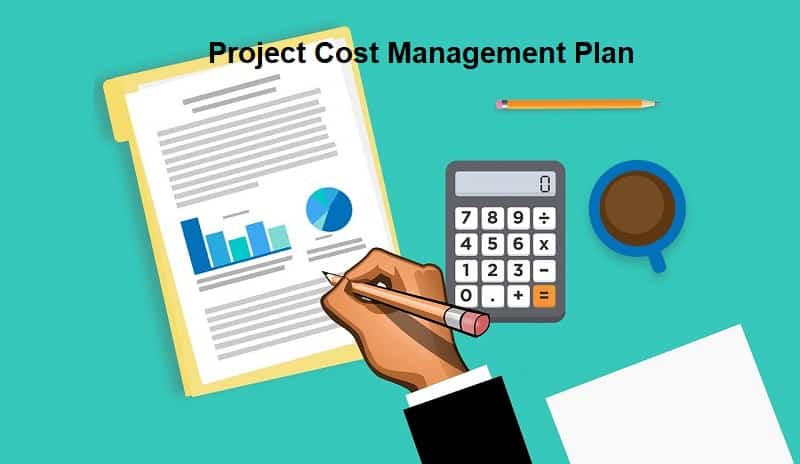When cost and budgeting go wrong, the project heads towards failure. It is important to manage the costs to complete the project in budget and on time. That’s where project cost management comes in!
Project cost management is a process of identification, estimation, allocation, and control of the costs. It continues throughout the project to make sure that the costs and expenditures remain within the budget frame. Project cost management plan is an essential component of a project. It offers you a pre-defined budget and helps regulate the cash flow. Also, it assists in certain decision-making procedures and ensures that you choose the most suitable option.
Now that we know how critical project cost management is, there needs to be a proper guide to write down a project cost management plan. Here, we are going to list down 7 steps to help you create your cost management plan:
1. Develop Work Breakdown Structure (WBS)
Work Breakdown Structure (WBS) is a significant part of any project. It lists down the deliverables and sub-deliverables of a project. This helps you identify which project activity needs certain resources and makes it easier to determine the associated costs.
Developing WBS is one of the initial things to do in a project. As you sit down to write a project cost management plan, you might already have WBS in your hand. If not, you need to make sure that the first thing you do is develop WBS. Without a WBS, it is not possible to identify resources and estimate and allocate the costs.
WBS can be formulated in the form of a flowchart. It helps you sequence your tasks and identify resources accordingly. Looking into your WBS and deliverables gives you a good idea of the overall project.
2. Identify Project Resources
Now that you have reviewed your WBS, it is time to identify your project resources that are crucial for executing your project activities and moving your project towards completion. This process is also known as resource planning.
Most commonly, resources include labor, tools, equipment, and infrastructure. A project manager must identify which resources are needed for the timely completion of project deliverables.
Resource planning can be effectively done if the project manager does the following:
Consider the availability and limitations of resources
The most common issue with resource planning is that a project manager fails to consider the availability and limitations of the resources. You need to figure out if you have enough resources available to execute a task and if there are any constraints in resource availability and utilization.
Use the Feedback
Using feedback greatly helps. So, gather feedback from your finance manager and your project team to get to know the internal and external resources.
Examine the Project Schedule/Timeline
Examining the project schedule gives you a good idea about the requirement of a certain resource. You can find out when and for how long you need resources.
3. Estimate the Costs
The next step is the cost estimation. In this step, the project manager quantifies the cost of the resources determined during resource planning.
Estimating costs is a bit complex, and so, the project manager needs to take certain factors into account for careful and accurate estimation. The most common factors include fixed and variable costs, organizational budget, inflation, and overheads.
It is important to note that accuracy is the key to cost estimation—higher the deviation between estimated costs and actual costs and fewer chances of project success. There are various estimation techniques and models to follow, such as Analogous Estimation, Parametric Modeling, and Program Evaluation and Review Technique (PERT).
To ensure greater accuracy, here’s what you need for cost estimation:
Cost of Resources
You must know the cost of each resource you will need during the project. It helps in overall cost calculation and budgeting.
Duration of Resource Requirement
For how long will you need a certain resource? There are some resources that you need throughout the project, while others require one-time use.
Assumptions and Risks
What are your assumptions regarding the cost of the project? What are the risks and constraints that might develop? Having a list of assumptions and constraints allows better cost management.
Previous Project Costs
Looking into historical data and finding out the costs of similar previous projects makes sure you do not repeat any past mistakes and make an accurate estimation. Therefore, it is important to maintain your registers.
4. Establish Performance Indicators
As you are done with cost estimation, you need to establish performance indicators to measure if the costs are being utilized as planned. You need to put certain rules in place that help you through progress evaluation. Performance indicators are an integral part of your cost management plan.
Choose Tools and Techniques for Measuring Performance
How do you measure performance? There are a number of tools and techniques that can help you measure performance. You need to choose the right one according to the nature of your project. Some great tools and techniques to use as performance indicators are Earned Value Management (EVM) technique and Percent Completion. These tools can help you allocate the costs, improving your overall budget management.
In a single integrated system, EVM can provide accurate forecasts of project performance problems, an important contribution to project management. EVM can combine measurements of the project management triangle: scope, time, and costs.
On the other hand, percent completion is an accounting method for long-term projects, recognizing revenue and expenses based on the work completed percentage during the period. Under percent completion, a contractor recognizes project income and expenses as the project progresses, usually monthly.
Related Articles:
- 9 Steps to Writing a Project Time Management Plan
- 6 Steps To Writing a Project Stakeholder Management Plan
- 10 Steps to Writing a Project Procurement Management Plan
- 8 Steps to Writing a Project Quality Management Plan
- 8 Steps to Writing a Project Communication Management Plan
- 7 Steps to Writing a Project Resource Management Plan
- 10 Steps to Writing a Project Scope Management Plan
5. Get Done with Budgeting
A lot of people consider budgeting as part of cost estimation. However, we think it is better to consider it as a separate process as budgeting is related to allocation, while estimation includes rough calculation.
The most significant reason for budgeting is that organizations usually depend on their future cash flows to fund their projects. The project manager makes sure that he allocates the budget according to the current financial pool through budgeting. Also, it facilitates in establishing realistic targets. This way, you not only spend on current activities but also save for the future ones in case the future cash flow is lesser than expected.
Allocate Costs to Project Activities
As you create your cost baseline, the next step is to allocate costs for project resources and activities. This is where project WBS and resource planning comes handy.
Good resource planning for cost allocation is essential for ensuring that projects are completed on time and within budget. It involves identifying and allocating human resources (staff, contractors, and consultants) and physical resources (such as equipment, materials, and facilities).
Moreover, a good resource plan includes using historical data, industry benchmarks, expert judgment, and techniques like critical path analysis or resource-leveling.
By carefully allocating costs to projects, organizations can ensure that they accurately track and account for all costs associated with their projects. You’ll be able to monitor each project’s progress more effectively with respective budget allocation and expected outcomes. This information can help you make better project management, resource allocation, and budgeting decisions.
Create a Cost Baseline
The cost baseline is an authorized spending plan for the project against which the project cost performance is to be measured. It allows you to determine how much costs you need to allocate to individual activities and modules. It does not only help measure progress but assess how much you should allocate for future project activities.
6. Formulate Cost Recording Procedures
As you spend the budget, there has to be a certain cost recording procedure in place to crosscheck and analyze the spending. Establishing a cost recording procedure makes cost analysis easier.
In simpler terms, cost recording procedure can be called reporting. To formulate a solid and efficient cost recording procedure, you need to do the following:
Decide Reporting Format
There are hundreds of formats for reporting. Always explain the report format in detail so that each team member or the concerned individual knows what to include in the report and how to create a presentable report. You can use a simple reporting template or an Excel file that suits your project better.
Choose Tools and Techniques
Now, what are the basis of recording and evaluation? For that, you need to choose some specific tools and techniques. Cost-benefit analysis is the best tool to determine if you have allocated the costs adequately.
Frequency of Cost Recording
How frequently do the costs need to be recorded? Depending on the magnitude and chunks of project activities, there can be a daily or weekly cost recording: higher the frequency, better the chances for corrections.
7. Establish a Cost Control Mechanism
Cost management plan does not only comprise of cost estimation and budgeting but also includes a cost control mechanism. That’s how you actually manage the costs of the project. Without a cost-control mechanism in place, it is not easy to implement your cost management plan.
Here’s what a cost-control mechanism helps with:
Monitor Project Progress
A cost control mechanism will assist you in monitoring the progress of the project. This way, the project manager can find out if things are going as planned in the cost baseline.
Update Costs
Recording and reporting will only provide information. Updating the costs and budget is something that comes under cost control.
Incorporate Changes to Baseline
With a cost-control mechanism, you can adjust the costs in case any changes appear regarding resources or timeline.
Final Thoughts
A project cost management plan acts as a financial guide. It estimates the costs for you, helps in the allocation and recorded spending. The cost management plan ensures that you do not overspend or pre-spend all of your budgets. It creates a balance between the costs of initial and later project deliverables. Also, it makes sure that you spend only where it is needed.
With the steps mentioned above, you will end up with an effective cost management plan for your project.




